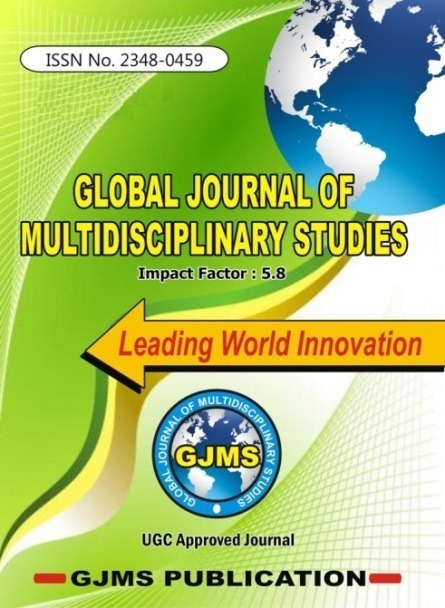“Six Sigma application for optimizing the processes preceding surgery in an Operation theatre”
Abstract
Operation Theater is most the important for a hospital where numerous surgical procedures are carried out in an aseptic environment which are critical for both the patient and the hospital. Through optimum utilization of operation theatre while maintaining the standards, there will be increase in the revenue for the hospital and will have positive impact on patient satisfaction as operating time will be reduced. The study aims to optimize the existing process and sigma level in the operation theatre. Competition in healthcare sector are forcing to look for new ways of quality management and process improvement. Six Sigma is a disciplined, statistical-based, datadriven approach and continuous improvement methodology for eliminating defects in a product, process or service. It was developed by Motorola and Bill Smith in the early 1980’s based on quality management fundamentals, and then became a popular management approach at General Electric (GE) with Jack Welch in the early 1990’s (Anonymous). To reduce the errors and to move towards perfection, most of the corporate hospitals are now functioning at Three Sigma or Four Sigma quality levels. (Rohini et al., 2011)References
Antony, J., & Banuelas, R. (2002). Key ingredients for the effective implementation of Six Sigma program.
Measuring Business Excellence, 6(4), 20–27.
Rohini, R. & J. Mallikarjun. (2011). Six Sigma: Improving the Quality of Operation Theatre. Social and
Behavioral Sciences 25 273 – 280
Chassin, R. (2009). The Six Sigma Initiative at Mount Sinai Medical Center. The Mount Sinai Journal of
Medicine, New York, 76(2), 173–181.
Chowduhry, S. (2002). Design for Six Sigma (First Edition). Kaplan Business.
Anonymous https://www.leansixsigmadefinition.com/glossary/six-sigma/
El-Eid, G. R., Kaddoum, R., Tamim, H., & Hitti, E. A. (2015). Improving Hospital Discharge Time. Medicine,
(12), e633.
Gijo, E. V., & Antony, J. (2014). Reducing patient waiting time in outpatient department using lean six
sigmamethodology. Quality and Reliability Engineering International, 30(8), 1481–1491.
Hartmann, D., & Sunjka, B. (2013). Private theatre utilisation in South Africa: A case study. South African
Medical Journal, 103(5), 285–287.
Kodali, B. S., Kim, D., Bleday, R., Flanagan, H., &Urman, R. D. (2014). Science Direct. Successful strategies
for the reduction of operating room turnover times in a tertiary care academic medical center. Journal of Surgical
Research, 187(2), 403–411.
Kumar, M., Malhotra, S., Singla, V., & Bhatia, K. (2016). Analysis of Start Time Delay in Operation Theatre
Lists. Scholars Journal of Applied Medical Sciences, 4(5), 1764–1769.
Linderman, K., Schroeder, R. G., Zaheer, S., &Choo, A. S. (2003). Six Sigma: a goal-theoretic perspective
Journal of Operations Management, 21(2), 193–203. http://doi.org/10.1016/j.jss.2013.11.1081
Siddharth, V., Kumar, S., Vij, A., & Gupta, S. K. (2015). Cost Analysis of Operation Theatre Services at an
Apex Tertiary Care Trauma Centre of India. Indian Journal of Surgery, 77, 530–535. [13] Singh, S., Remya, T.,
Shijo, M., & Nair, P. (2014). Lean six sigma application in reducing nonproductive time in operation theaters. The
Journal of National Accreditation Board for Hospitals & Healthcare Providers, 1(1), 1.
Talati, S., Gupta, A., Kumar, A., Malhotra, S. K., & Jain, A. (2015). An analysis of time utilization and
cancellations of scheduled cases in the main operation theater complex of a tertiary care teaching institute of North
India. Journal of Postgraduate Medicine, 61(1), 3–8.
TolgaTaner, M., Sezen, B., & Antony, J. (2007). An overview of six sigma applications in healthcare industry.
International Journal of Health Care Quality Assurance, 20(4), 329–340.
TolgaTaner, M., Sezen, B., &Atwat, K. M. (2012). Application of Six Sigma methodology
Published
Issue
Section
License
Copyright Notice
Submission of an article implies that the work described has not been published previously (except in the form of an abstract or as part of a published lecture or academic thesis), that it is not under consideration for publication elsewhere, that its publication is approved by all authors and tacitly or explicitly by the responsible authorities where the work was carried out, and that, if accepted, will not be published elsewhere in the same form, in English or in any other language, without the written consent of the Publisher. The Editors reserve the right to edit or otherwise alter all contributions, but authors will receive proofs for approval before publication.
Copyrights for articles published in World Scholars journals are retained by the authors, with first publication rights granted to the journal. The journal/publisher is not responsible for subsequent uses of the work. It is the author's responsibility to bring an infringement action if so desired by the author.

